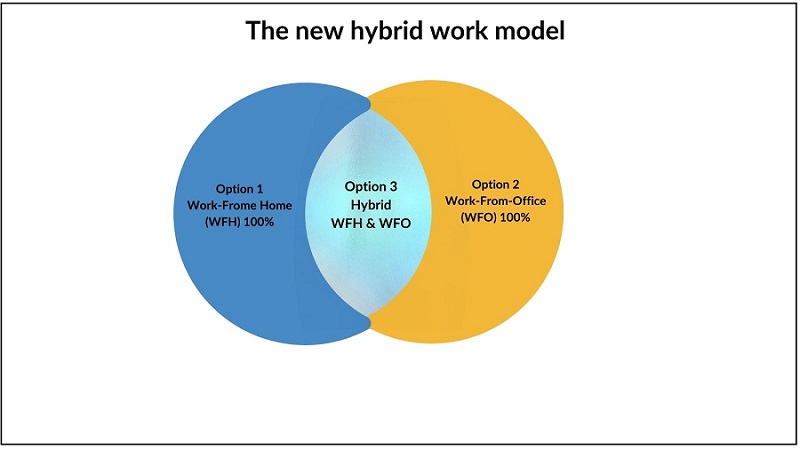In 1973, a NASA engineer named Jack Wiles decided to test an idea he called ‘telecommuting’. This involved carrying out his work entirely at home, without ever needing to come into the office while he worked on a complex communication system for NASA.
Wiles co-wrote a book about the subject, The Telecommunications-Transportation Tradeoff, in which he proposed telecommuting as a solution to road traffic and the depletion of limited resources.
In the 1980s, IBM followed suit, installing remote terminals in the homes of a few workers. By 1983, the initial trial of five remote employees exploded to 2,000.
Numbers of remote workers grew steadily over the last 40 years, especially due to the advent of the internet. Since 2020 however, there has been another astronomic rise in the numbers of people working from home due to government mandates around the world as a result of the coronavirus pandemic.
The sudden increase in remote work caught many managers off-guard, with 40% of them feeling ill-equipped to manage a remote team. But there’s no reason remote working has to cause extra stress. It’s clear that this four decade long trend is here to stay.
This is true even if you’re running a physical business. For example, using SEO to boost your website traffic might involve working with a web developer on the other side of the world.
Companies that invest in long-term remote working strategies will be able to attract a more diverse array of talent and take advantage of the efficiencies of remote working. These benefits will only continue to increase as remote working and work-from-home becomes more commonplace and more systems are created to better manage it.
With that in mind, here are 5 tips to create a long-term remote work strategy.
Establishing Your Long-term Remote Work Strategy
1. Establish a Remote Work Culture
For remote working to take off in your workplace, it has to be more than just an add-on. The companies that make the most of remote working embed the idea deeply into their culture. Normalizing remote working within your company will make sure that you gain more of the benefits and fewer of the detriments.
Team members who work remotely should not be treated as less integral than those who come into the office. Make sure that no one is left out of decision-making or other critical processes.
Culture starts at the top and filters down. Leaders in your company should set an example. Everyone should try remote working for a short period of time or at regular intervals to maintain a sense of empathy. This might involve setting up collaborative workspaces for your hybrid team so that everyone can experience both sides.

2. Manage Expectations about Working Remotely
Working remotely can create unrealistic expectations for both employees and employers. This will result in unnecessary tension if left unresolved. Employees today are interested in a hybrid work schedule and may be expecting more flexible working hours and work times. Employers may slip into contacting employees around the clock, unwittingly putting pressure on them to respond and creating long term resentment.
The key words here are flexibility, compromise and clarity. Remote working has meant that the regular 9 to 5 hours are no longer as relevant as they once were. Any set of working hours can now be agreed between employee and employer.

Many companies are no longer enforcing any set of hours as long as people turn up to meetings and are productive on their own schedule. However when specific sets of hours are needed, those hours should be mutually agreed and both parties ought to respect them.
Whatever is agreed, the terms should be very clear to everyone involved. Confusion as to the new status quo will only cause disappointment and resentment to spread.
Working remotely can also have different monetary implications for your team. Taking into account the financial wellness of remote employees in your company by providing equipment and compensation will show that your remote strategy is more than just rhetoric.
3. Communicate Effectively with Your Remote Team
While there is no substitute for informal ‘water-cooler conversations’, there are a whole host of tools that make remote communication almost seamless.
There are tools which allow video calls, instant messaging, real-time collaborative work such as Zoom Rooms Video Conferencing, and mutual organization of tasks and workflows. Taking advantage of these will make communicating with your remote team feel even more efficient than mandatory in-person meetings.

Photo credit: Deviaje
It is important that all the contractors and agents your company works with are on board as well. Maintaining good communication with your remote contact center agents will improve morale and reduce potentially costly misunderstandings.
4. Create Opportunities for Remote Team Building
Despite what the name suggests, remote working does not have to be all about work. In the same way that in-person team-building exercises can promote trust and friendship between teams, so too can remote play. Online games, quizzes and activities can dispel the dullness and lack of connection and cohesion that is sometimes associated with working remotely.
Team building doesn’t just have to happen outside of regular work. For example, making sure that your quality assurance team has the right usability testing tools will reduce their friction with your developer team. These kinds of investments improve relationships and build up your culture and capacity.
5. Provide Digital Support for Your Remote Team
Even with the purest of intentions and the best laid plans, remote working can still go wrong. Team members may find it harder to solicit support from each other or from human resources. Digital support structures which make sure that employees have the equipment, training and moral support they need are critical to maintaining a remote work operation in the long term.
Having a multi-tenant cloud system for your software will allow unlimited scaling of your software applications. This means that as your remote team grows you’ll reduce the chance of programs slowing down and the opportunity for data breaches.
It may well be worth investing in wellness app subscriptions, online therapy options and other perks of the job. This will boost the productivity of your team in the long run and create a return which will far outweigh the investment.

Summing Up Remote Work Strategy
With these 5 tips to streamline your remote work strategy, there’s no reason to fear the future of work. You and the rest of your team will be well-equipped to handle whatever pitfalls come your way and to make the most of remote opportunities.
Invest in remote-working as a future strategy instead of a temporary stop-gap. Even if you maintain a mostly brick-and-mortar presence, you will be well placed to take advantage of opportunities to work with talent from around the world.
If you are interested in learning more about remote work or are looking for alternatives to your work-from-home schedule, check out our All Access Pass.
Author Bio: Jessica Day – Senior Director, Marketing Strategy, Dialpad
Jessica Day is the Senior Director for Marketing Strategy at Dialpad, a modern business communications platform that takes every kind of conversation to the next level—turning conversations into opportunities. Jessica is an expert in collaborating with multifunctional teams to execute and optimize marketing efforts, for both company and client campaigns. Jessica has also written for domains such as Plutio and VirtualSpeech. Here is her LinkedIn.

